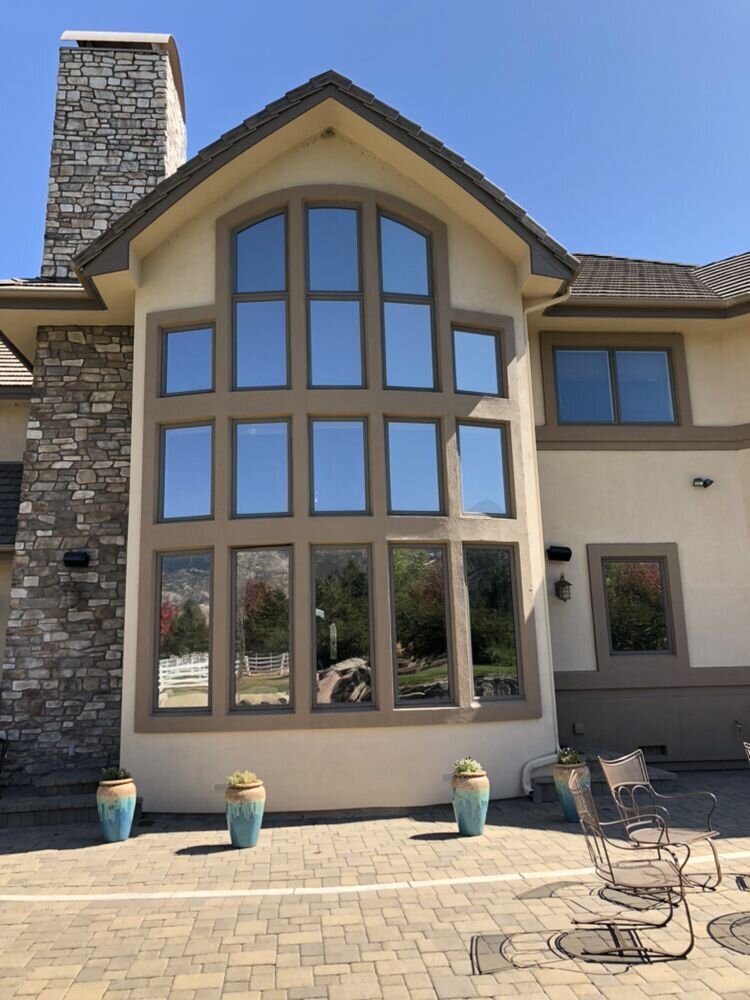Residential Window Tint: Maintain Your Home Cool in the Summer Season Warmth
Residential Window Tint: Maintain Your Home Cool in the Summer Season Warmth
Blog Article
Just How Residential Home Window Tinting Enhances Your Home's Energy Efficiency
Residential home window tinting presents a compelling solution for homeowners looking for to enhance energy effectiveness within their living rooms. By applying specialized movies to home windows, it properly lowers warm transfer, thereby supporting interior temperature levels and decreasing the need for extreme home heating or air conditioning.
Comprehending Home Window Tinting
Recognizing window tinting is important for house owners seeking to improve both convenience and energy effectiveness in their home. Residential Window Tint. Window tinting entails the application of a slim film to the inside or exterior surface area of glass windows. This film can dramatically regulate the quantity of sunlight and warm that goes into a home, therefore influencing indoor climate conditions
There are numerous sorts of window tinting films offered, each with distinctive residential or commercial properties. Colored films absorb solar energy, while reflective films deflect it away from the glass surface area. Ceramic films use an equilibrium of visibility and warmth being rejected, making them a popular selection amongst home owners. The performance of window tinting is frequently measured by its Visible Light Transmission (VLT) percent, which indicates just how much light can travel through the movie.
Advantages of Power Efficiency
Home window tinting not only improves aesthetic appeals yet additionally plays a substantial duty in improving power efficiency within property spaces. By decreasing warm transfer with windows, colored movies produce a much more steady indoor environment, which can bring about considerable reductions in energy intake for heating & cooling. This energy effectiveness equates right into reduced utility bills, supplying property owners with substantial lasting financial savings.

Additionally, window tinting enhances the comfort of living rooms. By lessening glow and obstructing hazardous UV rays, tinted windows produce a more positive environment, which can result in enhanced wellness for residents. The protection versus UV rays likewise aids protect furnishings and floor covering from fading, adding to the long life of house things.
Just How Tinting Functions
Tinting films operate through a combination of innovative products and modern technologies developed to manage the quantity of solar power going into a home. Mostly composed of polyester, these films typically include metallic or ceramic particles that soak up and reflect warmth. This twin capacity permits them to substantially minimize the infiltration of ultraviolet (UV) rays and infrared radiation while allowing noticeable light to pass through.
The performance of window tinting is determined by its solar heat gain coefficient (SHGC), which indicates how much solar energy is transmitted through the window. Lower SHGC worths are better as they signify better warm denial. Additionally, window tints can feature a variety of tones, permitting property owners to customize their aesthetic choices while improving power efficiency.
Additionally, these films act as an obstacle, avoiding warmth loss throughout cooler months by showing indoor warmth back into the space. This thermal insulation impact complements the air conditioning advantages acquired during warmer months, adding to a balanced indoor environment year-round. By taking care of solar power efficiently, domestic home window tinting not only enhances comfort however additionally plays an important function in decreasing power intake and reducing energy expenses.
Selecting the Right Color

There are different sorts of home window films available, including dyed, metalized, and ceramic. Dyed movies are economical however may have restricted resilience. Metalized films supply better warmth denial yet can interfere with digital signals. Ceramic movies provide exceptional heat control without endangering presence and are extremely resilient, making them a preferred selection.
Noticeable light transmission (VLT) is one more critical element, as it suggests the amount of natural light that can travel through the tinted glass. Homeowners need to choose a tint with a VLT that complements their lighting preferences while still supplying ample glare decrease.
In addition, analyzing the solar heat gain coefficient (SHGC) can assist figure out how well a color can obstruct warmth from sunlight. A lower SHGC suggests far better warmth control, eventually improving power effectiveness.
Installment and Upkeep Tips
Appropriate installation and maintenance are crucial parts in making best use of the benefits of property home window tinting. To accomplish optimal outcomes, it is suggested to employ a certified expert for installment. This guarantees that the color is used appropriately, preventing air bubbles, creases, or misalignment that could endanger performance. Experts try these out also make use of specialized tools and techniques, which can enhance the sturdiness and effectiveness of the tint.
Complying with installation, upkeep is vital to extend the life of the window film. It is recommended to wait a minimum of one month before cleansing the tinted windows to enable the adhesive to treat totally. When cleaning, use a soft fabric and a gentle, ammonia-free cleaner to prevent harming the movie. Stay clear of abrasive materials that could damage the surface area.
In addition, routine examinations are advantageous. Look for any type of peeling or bubbling, which could suggest inappropriate setup or wear over time - Residential Window Tint. Addressing these problems without delay can avoid further damages and maintain energy performance. By sticking to these installment and upkeep tips, home owners can ensure their home find window tinting continues to provide significant energy cost savings and convenience for years ahead.
Final Thought
In verdict, residential home window tinting serves as a reliable option for enhancing energy performance within homes. By decreasing warmth transfer and obstructing harmful UV rays, home window films contribute to decrease power consumption and boosted indoor comfort.
Window tinting entails the application of a slim film to the interior or outside surface of glass home windows. By reducing heat transfer with home windows, tinted films create an extra secure indoor straight from the source environment, which can lead to considerable decreases in power consumption for home heating and cooling.The effectiveness of window tinting is determined by its solar warmth gain coefficient (SHGC), which suggests how much solar power is sent with the window. By taking care of solar energy effectively, property window tinting not just improves convenience yet likewise plays an important duty in reducing energy usage and reducing energy costs.
By reducing warmth transfer and obstructing hazardous UV rays, home window films add to lower energy consumption and improved indoor convenience.
Report this page